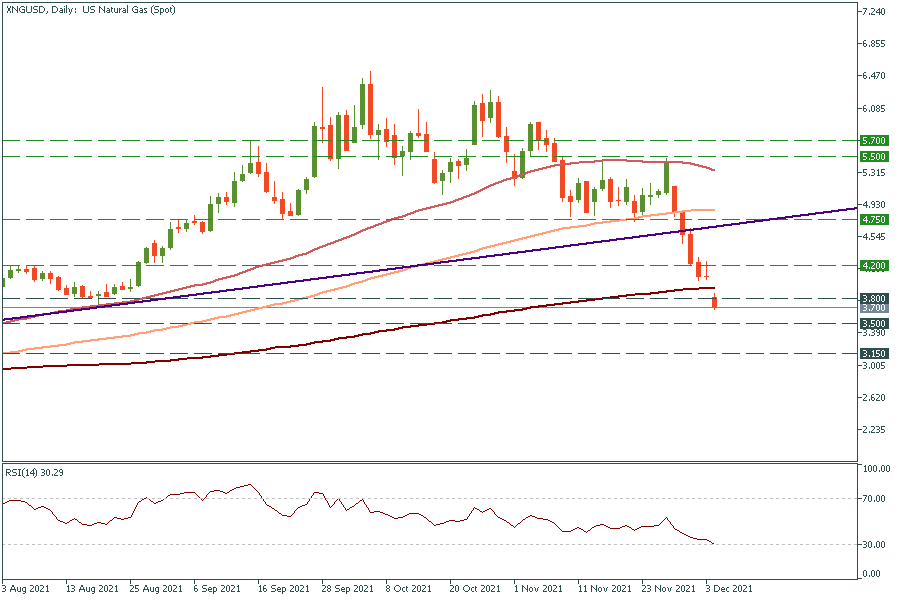What is going on with gas?
Last week, the price of US gas had posted three days of heavy falls. The gas slumped from the highs near $5.5/mmBtu to the lows of $4/MMBtu near the 200-period MA. On Monday, the energy asset opened with a gap below the 200-day moving average. What is going on with this energy asset these days, and should we prepare for further falls?
What is driving the price of gas?
Currently, the gas price is driven by geopolitical news and the overall risk sentiment in the markets. For sure, the most impactful events for the gas’ price have been happening in Europe. The gas prices in Europe were boosted to an all-time high above 1900 amid the energy crisis in the region and political uncertainties related to a delay in launching of Russia’s Gazprom pipeline called Nord Stream 2. In addition, the certification requirement of Nord Stream 2 in Germany slowed the gas distribution in Europe and pushed the gas prices up. At the same time, the newly identified omicron strain created uncertainties in the market. The risk-off sentiment resulted in investors rebalancing their portfolios and withdrawing their funds from risky assets. As commodities are traditionally viewed as risky investments, gas prices reacted with falls.
Another factor that pulled the gas price down last week was the forecast for warmer winter in North America. The weather outlook for December, January, and February suggests higher temperatures in several US regions. It is a bearish factor for gas.
Should we expect a further plunge?
Given the indeterminacy around the gas supplies coming from Russia, the price has a high chance of an upcoming reversal. However, a clearer picture will be visible within a couple of days. Technically, the gas price gapped below the 200-day MA and tested the support of August at $3.8/mmBtu. Buyers may try to fill in this gap and push the price back to the resistance of $4.20/mmBtu. However, a plunge below the support of $3.8/mmBtu will signal a continuation of the downtrend. In that kind of scenario, the next support will lie at $3.5/mmBtu with a further plunge to $3.15/MMBtu.

Note that if you want to trade gas with FBS, you must choose XNG/USD in MetaTrader or FBS Trader.